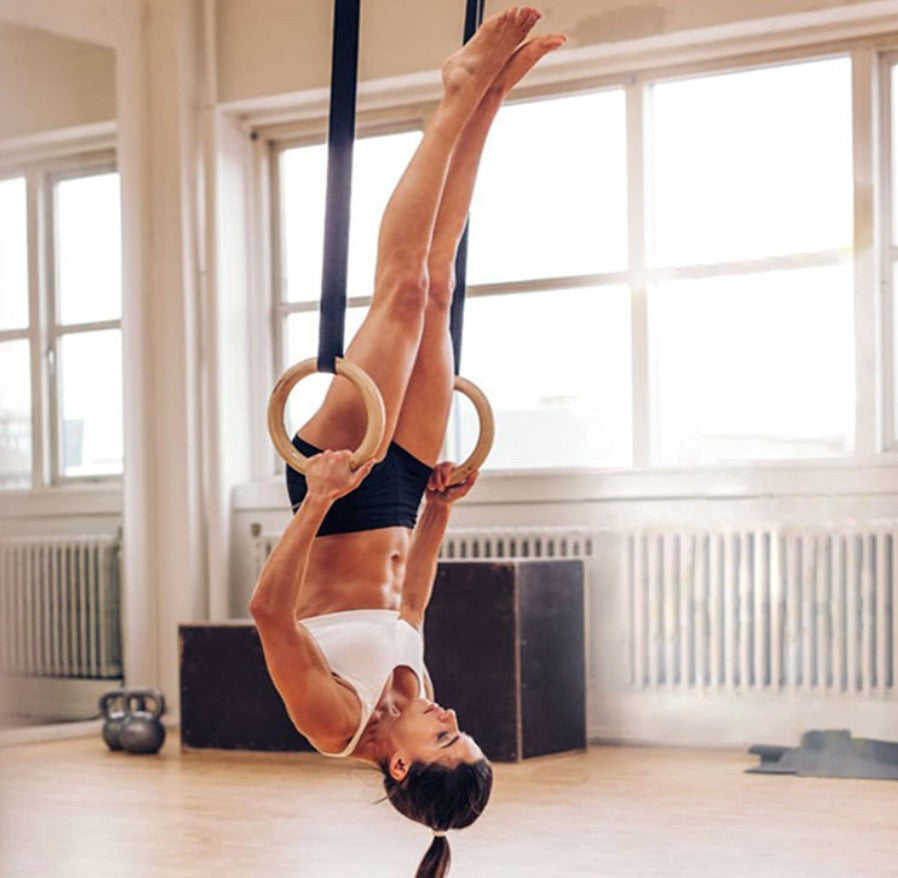At this stage of the pandemic, you'll know a fully-stocked wall of dumbbells is surplus to requirements. But even so, resistance band workouts remain under-utilised and overlooked for packing on size and strength. With the right resistance band exercises, however, it's possible to grow every major muscle group with little more than a solitary strip of elastic.
Besides, there's no beating the portability of the band. They're ideal for home use, outdoors workouts, hotel sessions – when the world opens up – and even for making use of a tight space at the gym. Loop it around your bedpost, hang it from a tree branch, or anchor it beneath your feet for a tough total-body workout, wherever you are.
"Resistance bands can be used on their own to perform almost every exercise you can think of with traditional weights like dumbbells," explains certified personal trainer Jack Hanrahan. If you use a door anchor, you can replicate cable machine exercises, like pull-downs and chest press, he says. Or, you can make body-loaded exercises easier or harder.
Get to grips with resistance band workouts, and you'll wonder what you ever did without this highly-functional bit of kit. Here, we explain why resistance band exercises work, divulge the benefits of the band, and share 15 of the best moves for every muscle group:
Why Resistance Band Exercises Work?
Resistance bands exercises might look tame on the surface, but they can add serious value to your strength workouts. That's because unlike dumbbells, kettlebells and weight plates, which remain equally heavy throughout the entire rep, resistance bands become increasingly challenging as they're pulled apart.
"When you stretch a resistance band, it generates increasing amounts of tension, which your muscles have to overcome," says Hanrahan. "This can range from less than 1kg up to a whopping 90kg, depending on the thickness of the band." Matching the right resistance band to the right exercise, he says, induces a "potent muscle-building stimulus".
Besides turning up the heat on basic bodyweight movements like push-ups and squats, you can pair the band with other weightlifting kit to adjust the resistance for heavyweight results. You can make an exercise easier, to improve your form – adding a resistance band to your pull-ups to bring your chest to the bar – or, conversely, more difficult.
"Resistance bands are a great way to increase the load on weights you already have at home," says Tash Lankester, PT at FLEX Chelsea. Take barbell deadlifts, for example. "Take a long resistance band, hook the ends outside each of the plates, and then stand on the band," she says. "This will increase the load, without having to buy more weight plates."
Even if you've transformed your garage into a bona-fide iron paradise, you still stand to benefit from resistance band exercises. When University of Wisconsin researchers measured the peak force and power of a squat, using resistance bands and free weights in tandem was found to have a significant advantage over using free weights alone.
Are resistance bands better than free weights and gym machines?
While resistance bands are great, it doesn’t mean that you need to shun the free weights and gym machines completely.
“I think they are a good complement to weights and machines,” Giamo explains. “They help add a different element to strength training and are especially great when weights and machines are not available. You can mimic almost all exercises and work the same muscle groups using resistance bands.”
In fact, studies show the effects of combining elastic and free weight resistance on strength and power in athletes. A combination of the bands and free weights, for example, shows significantly greater results compared to just using free weights alone.
Ultimately, to improve your overall body composition, don’t just rely on one or the other. Use a mixture of resistance bands, free weights, and machines to give yourself a great workout.
Not All Resistance Bands Are Created Equal
Resistance bands are made of latex or rubber, and available in various sizes and thicknesses. Most bands are colour-coded according to how much tension they offer, but often the easiest way to tell them apart is to look at the width. The wider the band, the more resistance it provides and the more difficult it is to stretch.
For that reason, it's tempting to think that a thicker band automatically equals greater muscle gains, but that isn't always the case. For example, if you're using a resistance band for assisted pull-ups, a thicker band will offer more counterbalance -making the exercise easier -so opting for a thinner band will make this particular exercise more challenging.




